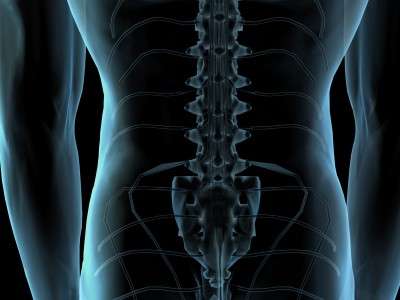The molecules that tell you how to grow a backbone

Growing the right number of vertebrae in the right places is an important job – and scientists have found the molecules that act like 'theatre directors' for vertebrae genes in mice: telling them how much or how little to express themselves.
The finding may give insight into how the body-shapes of different species of animals evolved, since the molecules under scrutiny are present in a wide range of animals – ranging from fish to snakes to humans.
An international team led by Dr Edwina McGlinn of EMBL Australia at Monash University found that de-activating a small group of microRNA (miRNA) molecules sent things awry for different parts of the backbone.
They already knew that 'Hox' genes were crucial in determining vertebrae patterns – as well as playing an important role in the spinal cord and wider nervous system. But how these genes were regulated was still unclear.
Edwina's team 'knocked out' molecules of the miRNA family miR-196.
They used fluorescent markers to light up cells where the miRNA molecules would have otherwise been located, and where the miRNAs have the potential to control the levels of tens to hundreds of genes.
This caused a 'flow-on effect' for many genes, the most significant of which were the Hox genes.
A segmented vertebral column – a backbone – is a defining characteristic of vertebrate animals.
Different species have different numbers of vertebrae in different areas of their spine – for example in their neck (cervical spine), middle-and-upper back (thoracic spine), or lower back (lumbar spine). Remarkably however, individuals of the same species show almost no variation in their spine.
This suggests that each animal has adapted just the right number and types of vertebrae for its environment.
"What we have found is a mechanism that controls the correct transition from one area of the spine to another as it is forming," says Edwina.
The finding is part of a project by the McGlinn Group to build a more complete road-map of how the size, shape and number of bones form within the early vertebrate embryo. This knowledge will contribute to the basic understanding of developmental processes, which in turn may assist in the treatment of a number of diseases and in regenerative medicine applications: for example altered Hox gene expression is important in some forms of leukaemia—so it's critical to know all we can about how these genes are regulated.
"The research is still in its early stages, but you've got to understand how an embryo forms before you can use that knowledge for medical or regenerative purposes," Edwina says.
More information: "Independent regulation of vertebral number and vertebral identity by microRNA-196 paralogs." PNAS 2015 112 (35) E4884-E4893; published ahead of print August 17, 2015, DOI: 10.1073/pnas.1512655112
Journal information: Proceedings of the National Academy of Sciences
Provided by Monash University


















